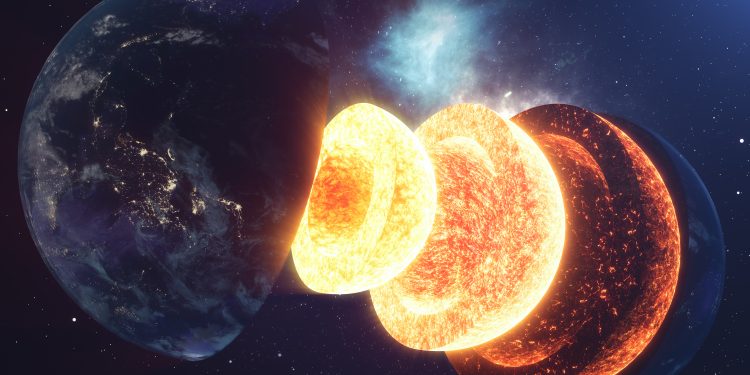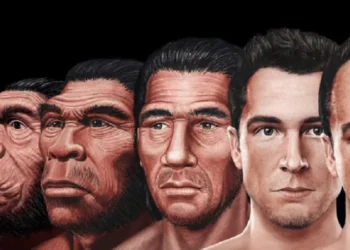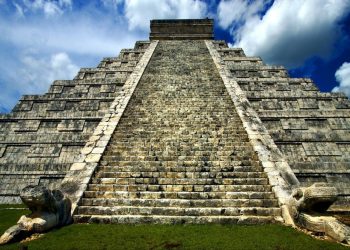Humankind is a species that is determined to explore. We explore the ocean, we explore the jungles, and we explore the Moon. We want to travel to Mars and beyond. We have incredible, highly detailed maps of Mars, and the surface of the Moon, and recently launched a 10-billion-dollar telescope that revolutionized the way we explore the universe.
But what lies beneath our feet is a giant unknown to mankind. Approximately 3,959 miles or 6,371 km separate the earth’s center from the surfaces of the planet. In other words, you could reach the center of the Earth if you dug a hole 6,371 km deep. Having reached this point, you would be inside the liquid metal core of the Earth.
Six thousand three hundred seventy-one kilometers is a big distance. The pressure at the center of the Earth is far too great for any machine to reach it. Even though we can’t go down there, we can “see” it indirectly through earthquake seismic waves that originate on the other side of the world.
But despite the fact we lack the technology to really physically explore what lay beneath our feet, numerous attempts have been made to dig into the planet as far as possible.
And one particular hole, which locals say leads to hell, is the deepest we’ve been.
There’s a hole far away in the Arctic, among the ruins of a Soviet research station. After the Soviet Union collapsed, it was abandoned and welded shut. In spite of this, it remains the deepest and creepiest well ever drilled in the world at more than 12 kilometers.
“Moho,” the boundary of the mantle, is nearly halfway down the hole. As the space race escalated during the Cold War, so did ambitions to explore the underground.
Geologists in the 1960s decided to drill through the ocean floor, where the crust is thinnest (about six kilometers deep), for a “shortcut” to the mantle. “Project Mohole,” as it became known, was the brainchild of the American Miscellaneous Society, a drinking club of scientific giants of the day. In a later letter, member Willard Bascom wrote, “It sounded so simple and logical.”. However, the situation turned out to be far from straightforward.
The attempt to reach unimaginable depths was before deep-sea oil and gas exploration was properly conducted. In order to keep a ship steady while a deep-hole drill bores deep below, for example, they had to make do with improvised technology. Underwater drilling eventually became possible as a result of this. Geology and the study of ancient oceans have been revolutionized by the sediment cylinders they brought up.
In 1966, however, the US Congress cut funding for Project Mohole. After spending about half a billion dollars in today’s dollars, it had only penetrated about 100 meters into the crust. After less than three years, NASA’s space program sent humans to the moon.
However, the Russians were closest to the Moho, reaching 12.2 kilometers more than a decade later. Drilling was done on land, which has a thicker crust but is easier to do because of its simplicity. They ran into a problem with melting instruments. “They were surprised by how hot it was down there,” Tkalcic says, as per the Sydney Morning Herald. Those depths are when rock starts to behave more like plastic. For every kilometer you go down, the temperature rises by 25 degrees.
Germany abandoned its Bavarian borehole at nine kilometers in 1994 due to 265-degree temperatures. Currently, it is open to the public as a tourist attraction and art installation. An artist sent down a thermally shielded microphone and picked up an unexplainable rumbling sound.
In an international exploration program, Japan is now leading a new push to the Moho. Through its flagship vessel Chikyu (designed to drill seven kilometers into the mantle), its science agency has already drilled over three kilometers into the oceanic crust, the furthest for the oceanic crust to date.
The exact location of the test is still being decided. Deuss says Japan sits on four tectonic plates grinding together, putting it at risk for earthquakes. It also presents a great opportunity for drilling into the Moho deep within the earth. As a result, the Earth will actually sag a little down in the crack or in the deepwater canyon.
In Tkalcic’s opinion, such feats are now within reach thanks to technology. “Ten years ago, we thought we’d have mantle rocks already, and it still hasn’t happened, but I was just at a symposium in Japan, and we really are close.” As with everything, what’s needed is more funding, he says. “But we’re talking a few hundred million dollars, much less than a NASA mission.”
We won’t be able to solve all the mysteries beneath our feet by reaching the Moho. Scientists are still baffled by the presence of these two blobs that are still almost 3000 kilometers underground, one beneath Africa and the other under the Pacific Ocean, for example. “We could never actually get down there to check what they are,” says Deuss. “It’s all detective work.”
In order to probe deeper than the Moho, Tkalcic says, you’d need instruments and probes made from materials “which probably do not exist yet,” which can withstand the same conditions that shape diamonds and melt metal.
Join the discussion and participate in awesome giveaways in our mobile Telegram group. Join Curiosmos on Telegram Today. t.me/Curiosmos











